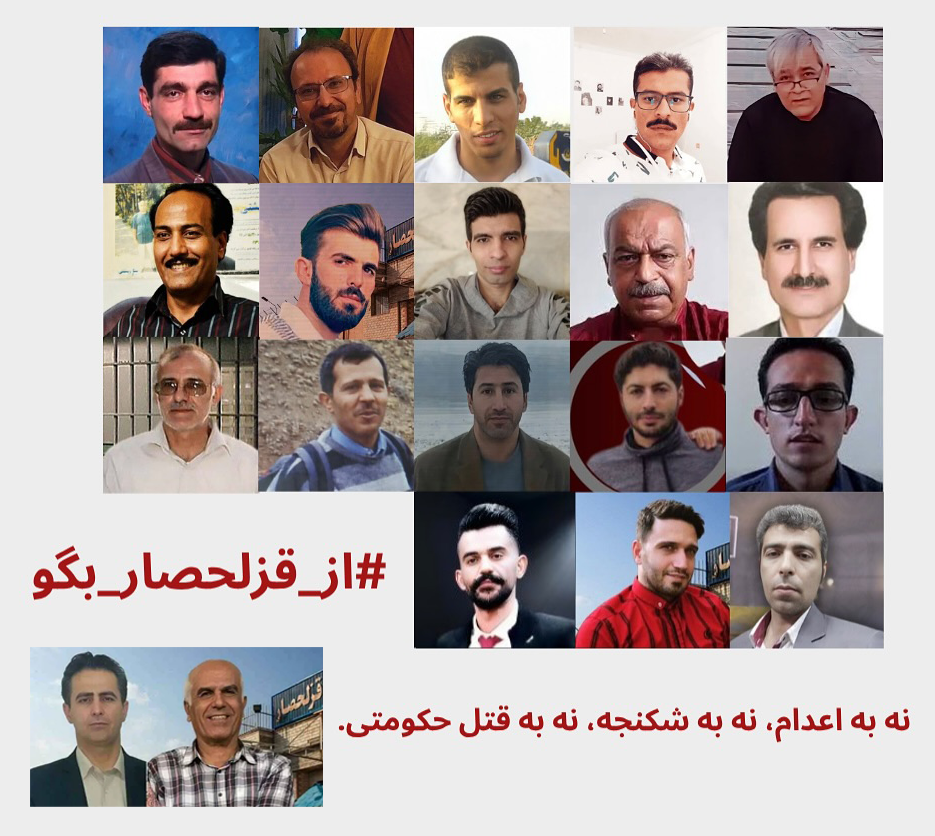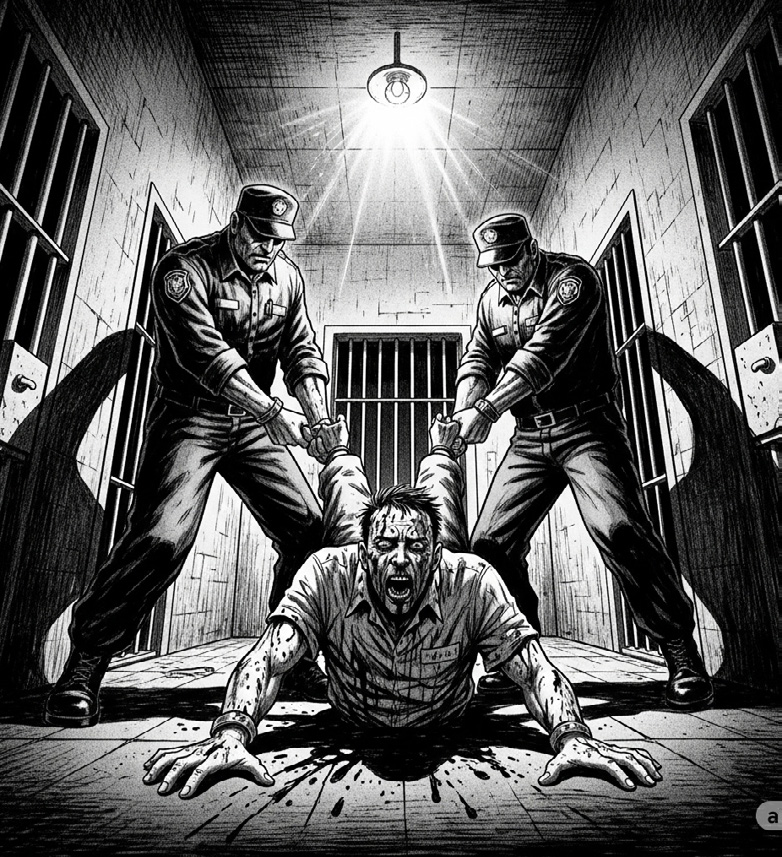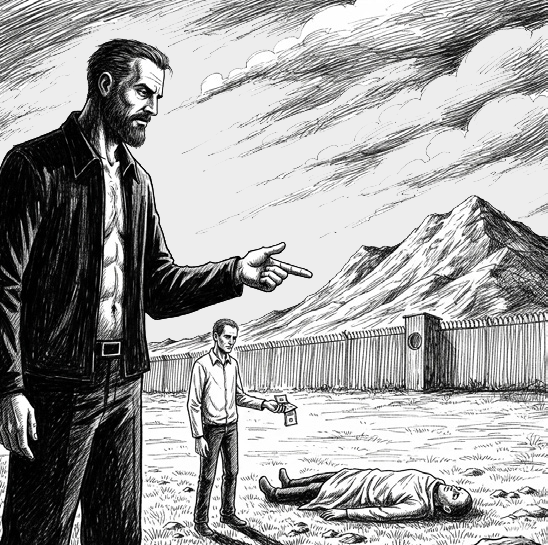
The letter, co-posted by the campaigns of prisoners Golrokh Iraee, Ahmadreza Haeri and FreeAliandAmirhossein, further states, in part:
To All Consciences That Remain Awake: We, the surviving political prisoners, bear witness to what happened on Saturday, July 26, 2025, in Ghezel Hesar Prison—a day that was not only bloody, but unprecedented in its cruelty, humiliation, and blatant violation of human rights in this country’s modern history… Before this day, there were 20 political prisoners in the Ward of Unit 4. After this day, two of our cellmates—Behrouz Ehsani and Mehdi Hassani—were unjustly murdered by hanging. Before their execution, they had no access to lawyers and no fair trial…. The masked agents attacked the prisoners with punches, kicks, batons, and insults. Those near the front of the hall or stepping out of their cells were immediately surrounded. Several agents tied prisoners’ hands behind their backs, dragged them out, and slammed them against the wall of the main corridor… masked agents lined the hallway all the way to the exit of Unit 4.
When the slogan “Death to the Dictator” was heard from the back of the hall, Ahmadreza Haeri shouted: “What is this savagery? If you want to search the hall, say so like a human being—we would have all stepped out!” The suppression commander’s response was to punch and slap him repeatedly.
The letter describes the injuries, some very severe, suffered during this assault carried out behind locked doors “so that over a thousand other prisoners, and even infirmary and cultural staff, would not witness the scene.” Mehdi Hassani and Behrouz Ehsani were loaded onto a separate van, and executed without notifying anyone. Saeed Masouri, a political prisoner who has been imprisoned for 25 years and a significant figure in the prisoner-led hunger strike movement, was transferred to a remote prison. These represent an attempt to break the prisoners’ weekly hunger strike and prisoners’ powerful and inspiring resistance more broadly. The letter concludes:
Silence over the “Bloody Saturday of Ghezel Hesar” will pave the way for wider executions—of political and ideological prisoners, and even ordinary citizens now facing death sentences simply for taking photos or engaging in civic activism. No to executions. No to torture. No to state killings. We, the survivors of the “Bloody Saturday of Ghezel Hesar,” will go on hunger strike tomorrow, Tuesday, August 12, 2025, in the 81st week of the “No to Execution Tuesdays” campaign, in memory of Mehdi Hassani and Behrouz Ehsani. This testimony has been written with accuracy and honesty, and it warns all awake consciences: Silence makes you complicit.
Surviving Political Prisoners of the “Bloody Saturday of Ghezel Hesar”
Monday, August 11, 2025
State Murders Continue to Surge
The Islamic Republic of Iran (IRI) has stepped up an already horrific pace of executions in the wake of its humiliating performance during the attack by Israel and the U.S. in June.[1] According to iranrights.org, more than 800 executions have been carried out so far in 2025, with 61 just in the first two weeks of August, several in group hangings. This equates to one state murder every six hours. The regime is increasingly targeting political prisoners as happened in Ghezel Hezar, and also targeting protesters from the 2022 Woman, Life, Freedom uprising for imprisonment and executions.
Last week, the Center for Human Rights in Iran (CHRI) issued an extensive report detailing that “Arrest, Imprisonment, Death Sentences Surge in Small Towns where Minorities Predominate. State Agents, Judges, Prison Authorities Rain Down Abuse Without Fear of Scrutiny.”
One recent case exemplifies the IRI’s hyper-repressive approach towards the protests against executions. Iranian teachers’ union activist Abolfazl Khoran, already serving a six-year prison term, has received an additional one-year sentence and 74 lashes (whipping) for “disturbing the order and public peace of the prison,” because there were protest slogans against death penalty verdicts found written inside Arak Prison.

The following eyewitness story taken from Bamdad Bidar #2 paints a vivid picture of the terror and inhumanity visited upon prisoners awaiting the regime brutally ending their life.
Prisoners were transferred to the cells of this wing a few days before their execution. They were handcuffed and shackled to a pole affixed to the ground to prevent self-harm or suicide, in order that [the regime] could ultimately be the ones to take their lives on the gallows. I was overwhelmed by an intense stench when I entered the cell at Rajai Shahr. Gagging and nauseated, I pressed my clothing against my nose and mouth, and looked around in the cell for the source of this foul odor. A few hours later, I realized that this was the death row cell, specifically for prisoners awaiting execution. They are kept in these cells from 4 to 48 hours before the actual execution. During this time, most suffer urinary incontinence due to fear and terror. Some, due to anxiety and pressure, would bang their heads against the wall. Parts of the wall and the carpet were bloody. But prison officials did not wash or replace the contaminated carpet, because the stench was part of how they torture prisoners before they are executed.
Demonization and Execution of Afghan Immigrants
A protest letter by over 1,300 Iranian and Afghan activists, artists and others against Iran’s massive roundups and deportations makes clear the life and death societal implications:
We are well aware that the term “deporting illegal migrants” is a euphemism for inhumane treatment of all migrants, whether documented or undocumented. The brutal and degrading methods of arrest, transfer, detention in camps, and subsequent deportation—even of those who possess legal immigration documents—have instilled immense fear and helplessness not only among recent Afghan refugees but also among Afghan-born and Afghan-descended individuals who were born in Iran, have lived there for decades, and consider Iran their home. In recent days, we have witnessed news and images of the way these people are treated, searched, and expelled by the authorities—images that provoke nothing but shame, anger, and outrage.
All this creates the conditions for these immigrants to be imprisoned, even executed under vague “drug-related” charges which is a violation of international law. A first-person account published in Bamdad Bidar #2 was told by an Afghan whose brother Rayman, married with three children, traveled to Iran to find work. Rayman was arrested on charges of drug trafficking when two travel companions were caught with their own drugs.

My brother was imprisoned for four years without being guilty of anything, and after four years, he was executed… We couldn't go to Iran to visit him in prison because we didn't have a passport. After the death sentence had been carried out, we were unable to travel to Iran… If we didn't pay 400,000 tomans they wouldn’t hand over the body, and [the Prison officials] buried his corpse themselves, at the foot of a mountain or hill. They just threw him away. My brother's family lives with us. There are 11 of us, in all, along with another brother who works in Iran. Other than tending livestock or going to Iran to work, we have no other source of income.
Find this story and more on this page.
Recounting the stories of real people who are being murdered by Iran’s theocrats and being routinely discarded brings alive the dignity and humanity of those, like Afghan immigrants, who are now being scapegoated and maligned by the regime. With 1.5 million Afghan refugees being deported out of Iran in 2025 so far into conditions of desperate poverty and even more extreme misogyny under Taliban rule, this is a dividing line question for a society whose ruling class is whipping up rabid xenophobia (hatred of immigrants). Those who stand against this are courageous as they may be subjected to repression themselves for doing so.
“Boxing Be Like…”
The resilience and determination of Iran’s political prisoners, past and present, continue to stand out in the world as both inspiration and challenge to fight for a better future for humanity. One such example (among many) has been that of rebel rapper Toomaj Salehi, who was repeatedly arrested by the Islamic theocrats, sentenced to death for his defiant lyrics and role (since released after international outcry); throughout he remains “a voice of the voiceless.”
His MEYDOONE JANG (Battlefield) may be a global lyrical tract for our time—a world of horrors and grief but also the need and possibility to wrench a better world out of the current nightmare. The song by Toomaj fiercely celebrates the historic Woman, Life, Freedom uprising of 2022 and issues a challenge for “unity of rivers that form a single sea”—a unity of the people across class, national and gender lines.
Watch Battlefield.
This week Toomaj posted a video of himself sparring in the gym—this is after having his hands and his leg broken under torture and forced to heal badly without treatment in prison in 2022-2024. We think his caption is a clarion call to the world for all of us to join together and be part of the single sea (translation taken from Instagram of @toomajofficial):
Boxing be like: You can't run away forever, life has surrounded you with a rope of [a boxing] ring, so fight… “You only lose when you don’t fight back.”
Help spread the voices of the political prisoners in Iran, and defend their lives. Donate to the International Emergency Campaign to Free Iran’s Political Prisoners Now.


